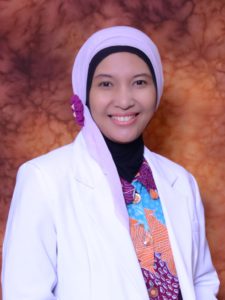2. The journal allows the author(s) to retain publishing rights without restrictions.
3. The legal formal aspect of journal publication accessibility refers to Creative Commons Attribution (CC BY).
Spinal Muscular atrophy (SMA) is a severe neuromuscular disorder which is a hereditary genetic disease. It is an incurable disease due to a defect in the survival motor neuron 1 (SMN1) gene. This report shows the benefit of rehabilitation intervention for the habilitation of a child with SMA Type 2. A 5-year-8-month-old female diagnosed with SMA by genetic testing complained of an inability to stand independently. Her rehabilitation problems were muscle power function, mobility of joint function, respiration function, exercise tolerance function, mobility, self-care, school education, and economic life. We provided rehabilitation programs with a regular follow-up for six months, including flexibility exercises, breathing exercises, cardiopulmonary endurance exercises, standing support exercises, wheeling exercises, and activities of daily living (ADL) exercise. We coordinated with a psychologist and social workers to assess the psychology and socioeconomic condition of the patient and caregiver. The muscle power function, which was evaluated by functional motor ability assessment using the Revised Hammersmith Scale for SMA (RHS), didn't show any deterioration, and she had improvement in the ADL capability. We resolved the mobility of joint function problem in this patient for the joint stiffness in both knees, and Cobb's angle of scoliosis was decreased. Respiration function assessed by peak cough flow and chest expansion showed an increase, and exercise tolerance function was also increased. The patient received some donations from donators to overcome economic issues assisted by a social worker for the activity chair, standing frame, and modified wheelchair. She could mobilize well using her own modified wheelchair, played with friends, and attended school. A follow-up by the psychologist showed good psychological conditions of the patient and family. The quality of life assessment of patients by PedsQL Neuromuscular Modul showed improved results, and the caregiver burden assessment by The Zarit Burden Interview had decreased. Rehabilitation intervention for the habilitation of a child with SMA Type 2 can maintain, restore, and promote the patient's functional ability to provide a better quality of life and control the caregiver burden.
Department of Physical Medicine and Rehabilitation
Department of Physical Medicine and Rehabilitation
Department of Physical Medicine and Rehabilitation
Mercuri E, Finkel RS, Muntoni F, et al. Diagnosis and management of spinal muscular atrophy: Part 1: Recommendations for diagnosis, rehabilitation, orthopedic and nutritional care. Neuromuscular Disorders 2018; 28: 103–115.
Finkel RS, Sejersen T, Mercuri E, et al. 218th ENMC International Workshop: Neuromuscular Disorders 2017; 27: 596–605.
Setyaningrum CTS, Harahap ISK, Nurputra DK, et al. Managing pregnancy in a spinal muscular atrophy type III patient in Indonesia: a case report. Journal of Medical Case Reports 2022; 16: 14.
Ross LF, Kwon JM. Spinal Muscular Atrophy: Past, Present, and Future. Neoreviews 2019; 20: e437–e451.
Kolb SJ, Kissel JT. Spinal Muscular Atrophy. Neurologic Clinics 2015; 33: 831–846.
Wolbring G. Habilitation and Rehabilitation. Oxford University Press, 2018.
Spinal Muscular Atrophy UK. Cure SMA, SMA Europe MDU and T-N. A Guide to the 2017 International Standards of Care for SMA 2017; 27: 596–605.
Foead A, Yeo WY, Vishnumukkala T, et al. Rehabilitation in spinal muscular atrophy. The Journal of the International Society of Physical and Rehabilitation Medicine 2019; 2: 62.
Finkel RS, Mercuri E, Meyer OH, et al. Diagnosis and management of spinal muscular atrophy: Part 2: Pulmonary and acute care; medications, supplements and immunizations; other organ systems; and ethics. Neuromuscular Disorders 2018; 28: 197–207.
Fauroux B, Griffon L, Amaddeo A, et al. Respiratory management of children with spinal muscular atrophy (SMA). Archives de Pédiatrie 2020; 27: 7S29-7S34.
Pera MC, Romeo DM, Graziano A, et al. Sleep disorders in spinal muscular atrophy. Sleep Medicine 2017; 30: 160–163.
Voulgaris A, Antoniadou M, Agrafiotis M, et al. Respiratory Involvement in Patients with Neuromuscular Diseases: A Narrative Review. Pulmonary Medicine 2019; 2019: 1–11.
Ripolone M, Ronchi D, Violano R, et al. Impaired Muscle Mitochondrial Biogenesis and Myogenesis in Spinal Muscular Atrophy. JAMA Neurology 2015; 72: 666.
Davis RH, Miller EA, Zhang RZ, et al. Responses to Fasting and Glucose Loading in a Cohort of Well Children with Spinal Muscular Atrophy Type II. The Journal of Pediatrics 2015; 167: 1362-1368.e1.
Li Y-J, Chen T-H, Wu Y-Z, et al. Metabolic and Nutritional Issues Associated with Spinal Muscular Atrophy. Nutrients 2020; 12: 3842.
Singh S, Khan S, Singh D, et al. The uses of overnight pulse oximetry. Lung India 2020; 37: 151.
Bulut N, Yardimci BN, Ayvat E, et al. The effect of two different aerobic training modalities in a child with spinal muscular atrophy type II: a case report. Journal of Exercise Rehabilitation 2019; 15: 322–326.
Vaidya S, Boes S. Measuring quality of life in children with spinal muscular atrophy: a systematic literature review. Quality of Life Research 2018; 27: 3087–3094.
Schofield R, Porter-Armstrong A, Stinson M. Reviewing the Literature on the Effectiveness of Pressure Relieving Movements. Nursing Research and Practice 2013; 2013: 1–13.
Böing S, Randerath WJ. Chronic hypoventilation syndromes and sleep-related hypoventilation. J Thorac Dis 2015; 7: 1273–85.
Hartawan T, Andriati A, Wardani NK. Comparison of VO2max Prediction of Submaximal Exercise Testing for Six Minute Arm Ergometer Test with Six Minute Walking Test in Untrained Healthy Young Adult Males. Surabaya Physical Medicine and Rehabilitation Journal 2021; 3: 7.
Copyright (c) 2022 Marietta Shanti Prananta, Mirna Minarti Rahmawati, Rachmat Zulkarnain Goesasi

This work is licensed under a Creative Commons Attribution 4.0 International License.
1. The journal allows the author to hold the copyright of the article without restrictions.
2. The journal allows the author(s) to retain publishing rights without restrictions.
3. The legal formal aspect of journal publication accessibility refers to Creative Commons Attribution (CC BY).




